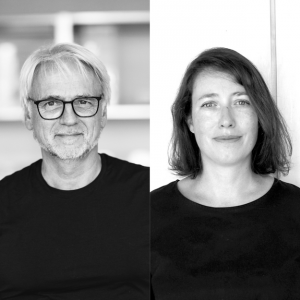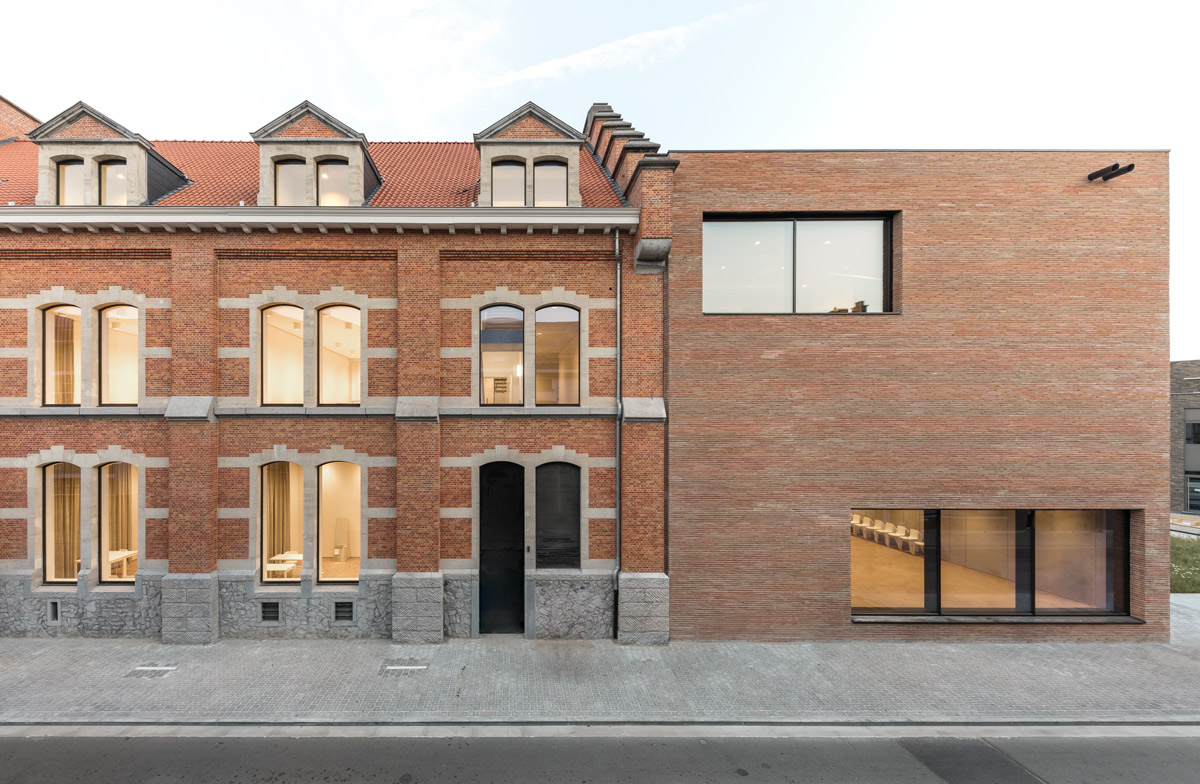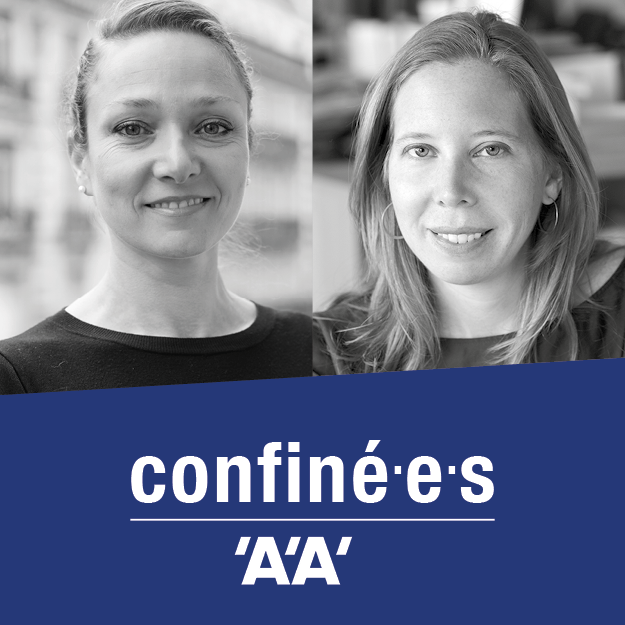Confiné.e.s : KAAN Architecten
Face au confinement imposé à tous pour contrer la propagation du virus Covid-19, nombre d’architectes ont dû adapter leur pratique et leur méthode de travail à ce nouveau rythme de vie. La série « Confiné.e.s » leur donne la parole, en interrogeant leur vision de la situation — mais aussi leurs recommandations culturelles. Aujourd’hui les réponses de Kees Kaan, associé-fondateur de KAAN Architecten et Marylène Gallon, associée et directrice de KAAN Architecten France.
[L’entretien suivant a été conduit en anglais avec Kees Kaan, voici ses réponses, en attente de leur traduction française.]
L’Architecture d’Aujourd’hui : Où êtes-vous confinés et comment vous êtes-vous organisés pour poursuivre votre activité ?

Kees Kaan : The lockdown in The Netherlands is relatively soft. A lot of responsibility is expected from the individual, there is no military in the streets. Overall, I see people taking care and behaving according to government’s recommendations. At the office, we started preparing for the lockdown in February. It was mainly about taking some extra IT measures and defining a protocol that enables a complete switch to remote work. We closed our offices in the middle of March, and since then ‘working from home’ has been the modus operandi. At the moment we are looking at how to reopen in the so called 1,5 meter economy.
Marylène Gallon : Je fais partie de ces « ex-métropolisés » qui ont quitté Paris pour leur province natale, de façon à rendre compatible vie professionnelle et vie familiale. Les autres collaborateurs de Paris se sont installés chez eux. Certains couples rassemblent parfois des architectes d’agences différentes sous le même toit.
Confinement et architecture sont-ils antinomiques ?
KK : I wouldn’t say they are opposites. Architecture is not about enabling as much public interaction as possible. It is all about the relation of private behaviour in different public domains. It is about finding working relations and careful definitions of spaces for public and private interaction.
If social distancing permanently changes human interaction, then that will be a fundamental architectural issue. It will impact how we’ll redesign our physical world, from the detail to the territory.
MG : Du point de vue de l’activité professionnelle, cela dépend des moments et des phases de projet. La solitude, le calme sont bienvenus. Ce confinement évite la « réunionite » et favorise la concentration (à condition que les jeunes enfants soient bien occupés…). La communication par mails, « team chats » et visios facilite les choses quand nous devons échanger avec nos partenaires. Nous étions déjà habitués à ce travail à distance entre Paris et Rotterdam, même si nous voyageons beaucoup à certains moments clés des projets (Rotterdam n’est qu’à 2h40 de Paris). Néanmoins, le travail d’équipe autour d’une feuille blanche, d’un plan, d’une maquette, d’un seul écran reste une évidence. Les projets sont de plus en plus des sujets partagés, collectifs ; l’architecture réside justement dans ce travail de communication. Ce que nous continuons à faire en l’adaptant.
Quelles leçons pensez-vous tirer de l’impact écologique de cette crise ?
KK : We see that nature is flourishing. No further explanation needed. Our standard behaviour has had a devastating impact on the environment. Having said that, this does not mean we are lost and should not try to mitigate this effect. We are operating on the frontline of our profession and the building industry is one of the largest impactors in that environment. In our most recent experiences we learned that making our buildings more sustainable works better when the link that is made between capex and opex, when we not only design to win crazy competitions but also design to build and operate the building. When the lifecycle becomes an integral part of the brief, sustainable design gets a proper dimension. This crisis shows us how quickly nature responds in a positive way to small changes in our behaviour. We should remember this when things turn back to ‘normal’.
MG : La « vitesse » de notre société devrait être reconsidérée : technologies, communications, mobilités. Tout comme l’équilibre entre abondances et pénuries. En effet, la société d’abondance dans laquelle nous vivons nous détourne souvent de l’essentiel. Globalement, la multitude de biens et d’informations dont nous disposons, parfois inutiles, énergivores ou chronophages, m’interpelle face à la pénurie sanitaire à laquelle nous faisons face (masques, respirateurs, places de réanimation). Dans le cadre bâti, beaucoup courent aussi derrière cette abondance : concepts, matériaux, formes, couleurs, technologies, labels, réglementations, à en oublier l’essence même des projets. À l’agence, l’essentiel est justement une notion que nous gardons toujours à l’esprit, ainsi que la question de la permanence bâtie, sa qualité et l’adaptabilité qu’elle permet. Cela conduit à une certaine sobriété architecturale.
Un film à voir / un livre à lire pendant le confinement ?
KK : Although in lockdown, I am still working in our practice, as well as teaching and running the architecture department in TU Delft. At home, I am living with a family with children still in the school age. They are also ‘working’ from home. It is a very dynamic and lively setting here, no lonesome moments. So now that we work remotely, it is not that I find an ocean of time to read or watch movies, rather the opposite. Not commuting saves time, but online work is slower and more focused.
I have no special books or films associated with the lockdown, although a very nice book comes to mind immediately. It is Being there by Jerzy Kozinski. It tells the story of a gardener, coming out of a lifetime lockdown in his garden, who is suddenly confronted with our society. It appears he has developed a completely fresh, non-corrupted and disarming state of mind.
MG : Dans le thème « on marche sur la tête » : Soleil vert de Richard Fleischer, ou L’aile ou la cuisse de Claude Zidi dans un registre plus gaulois ! Les récits maritimes avec lesquels on peut faire un parallèle en ce moment : La longue Route de Bernard Moitessier, récit d’une course en solitaire de 11 mois en 1969, et, plus récent, Le Grand Marin de Catherine Poulain, récit âpre à bord des grands bateaux de pêche de l’Alaska.
Et bien sûr le hors-série de AA sur l’agence : KAAN Architecten | Maîtres Narrateurs ?
Un compte à suivre sur les réseaux sociaux ?
KK : Those instagram accounts : @cp.complexprojects, @datapolis_cp, @espaciogris
MG : Maintenez les liens ! Téléphonez à votre voisine, votre grand-père ! Connectez-vous à vos amis et à votre famille ! Sinon bien sûr : @revue_aa et @KAANArchitecten.
Qu’espérez-vous de cette expérience ?
KK : I hope that after lockdown we can maintain some parts of the remote working system. In certain cases, it is more effective than continuously trying to meet physically. It saves travel time and it is better for health and the environment.
I also learned how vulnerable our system/economy is. It is entirely cashflow based. There are hardly any reserves. When the cash stops flowing, systems collapse. We somehow need to make our economy more sustainable. This requires us to plan for the long term rather than for the quick win. Make companies more resilient on one hand, the employment system more flexible on the other.
A very interesting phenomenon is how quickly the new exceptional became the new normal. People can adapt quickly and easily to new rules which become new norms, and then we display different behaviour. Dutch government bet on people’s sense of responsibility by announcing a relatively loose lockdown. I think it has worked, and it has set an example.
The 1.5-meter rule made us more gentle towards each other, and maybe even more polite. We avoid unnecessary movement and we have developed a cure from the ‘fear of missing out’ caused by intense social media exposure. Maybe we can hold on to this feeling after lockdown gets alleviated.
MG : En premier lieu, j’espère voir une Europe plus unie : au-delà des hommes et des capitaux qui circulent, les liens culturels et sociaux sont encore trop distants. Le socle européen de l’enseignement, de la recherche du partage de connaissances reste à consolider. Ensuite, je compte sur un système de santé qui trouve (enfin) l’équilibre. En tant que française ayant vécu aux Pays-Bas, il me semble que le modèle néerlandais a des ressources en la matière. Enfin, la reconnaissance de l’éducation et de la culture comme des activités de première nécessité.
Quel impact a ce confinement sur la perception de votre espace de travail et, inversement, de votre espace domestique ?
KK : I have always loved working from home. I like the idea of participating in processes without being constantly present in the office. I have a great workspace in my house that allows me to work comfortably and in an effective way. Still, I miss the office and my team very much today.
The lockdown has forced many people with children to combine family life with daily work. Most of us have had a good opportunity now to test our homes, not just as places for touchdown and sleep, but as real homes to live in, spend hours together with family and find a good balance between privacy and company. I am sure the requirements for our living spaces will be critically reviewed in the near future. I am also sure that most of us will be relieved when the kids go back to school and the office reopens.
I’m also doing my teaching and other TU Delft related work remotely. We meet students and have critique sessions online. It works, but it is far from ideal. Although it surely is a very interesting additional tool, online environments cannot replace real-life interaction (yet). This is why I believe that, as physical entities, the faculty and the office space will remain important for teamwork and for the special ambience they have to exchange ideas and knowledge. The question is, however, if the large open spaces crammed with people are sustainable in the coming years.
When the digital age started, some predicted that paper industry would die, but the opposite occurred. We use more paper now than ever before.
On one hand remote work might reduce the need for office/work space, but increase the need for living space on the other. Maybe the reduction was already assumed in the previous crisis implemented in ‘flexwork’ offices.
The need for social distance increases the demand for built space and infrastructure in general, and this is interesting in the context of the density debate. The Covid-19 charts displayed on all media clearly showed the relation between urban density and levels of contamination. The denser the area, the more likely and quickly the virus could spread.
This puts the entire discussion on density, urbanity and territorial development of metropolitan areas in a new perspective. Maybe the polycentric model of The Netherlands is not such a bad one in this context after all.
MG : Personnellement, je bascule constamment de mon écran sur lequel je travaille à 200km/h, à la lenteur de la vie familiale. C’est un peu une vie du début du XXe siècle avec les technologies du XXIe… Cette situation me conforte tout de même dans la capacité à mener vies familiale et professionnelle dans des lieux isolés.
Sur la question de l’habitat, le confinement n’appartient pas qu’à cette crise. Je pense aux malades, aux personnes âgées, aux habitants géographiquement, socialement ou économiquement isolés, aux enfants gardés à domicile et à ceux qui les gardent, aux adolescents qui passent beaucoup de temps dans leurs chambres, aux télétravailleurs.euses déjà représentatifs.ves avant cette crise, etc. Tous les logements doivent être dignes et vivables pour y passer la plupart de son temps. C’est une évidence. Ce confinement sanitaire nous conforte alors dans les sujets essentiels pour la conception des logements : lumière naturelle, vues, exposition au soleil, circulation de l’air, flexibilité et adaptabilité, espaces extérieurs, sentiment d’espace, etc. L’ensemble des acteurs de la ville va certainement en tirer les meilleures leçons. L’opportunité est là, il faut la saisir et la magnifier.
_____
Le site de KAAN Architecten.
_____
Découvrez également le hors-série AA PROJECT consacré à la démarche architecturale de KAAN Architen, disponible sur notre boutique en ligne.





